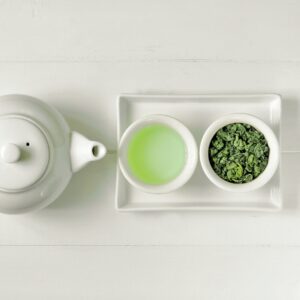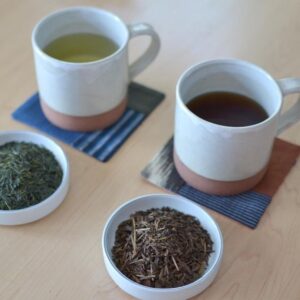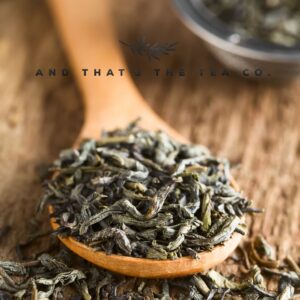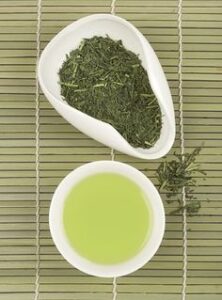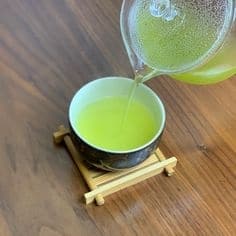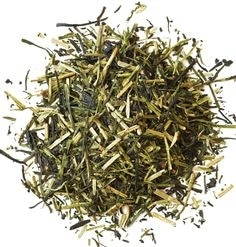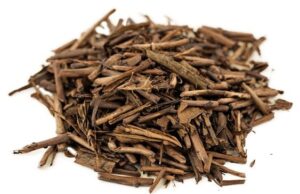
Hojicha is a green tea roasted at high temperatures, known for its fragrant aroma and lingering taste. Often enjoyed after meals or between them, Hojicha’s roasting process reduces the astringent catechins and caffeine, making it gentler on the body. Its low caffeine content makes it suitable for children, pregnant women, and even consumption before bedtime. There are three types of tea commonly used to make Hojicha: Sencha, Bancha, and Kukicha, each offering unique characteristics.
Sencha
Sencha is a popular daily green tea in Japan, grown year-round and harvested up to four times a year, beginning in May. The first three young leaves are cut and processed to stop oxidation, preserving its green color and fresh aroma. Sencha offers an astringent flavor, which becomes more pronounced when roasted. The tea is divided into three grades: high, medium, and normal.
If Sencha undergoes extended roasting, it becomes Fukamushicha (深蒸し茶), a richer, more robust tea with a stronger color and flavor than traditional Sencha.
Bancha
Bancha (番茶) is considered lower in quality than Sencha as it is harvested later in the year, usually during the third or fourth harvest. The larger leaves used for Bancha are massaged and dried, producing a mild flavor and light brown to yellow color. While it lacks the refinement of Gyokuro or Sencha, Bancha is commonly enjoyed for its astringency and refreshing tannins. It is low in caffeine, making it suitable for general consumption.
When roasted, Bancha transforms into Hojicha, characterized by reddish-brown leaves and a distinct, earthy aroma. This tea is ideal for rinsing the mouth after meals, as it contains fluoride, which may help reduce bacteria.
Kukicha
Also known as Boucha, Kukicha is made from the stems of Sencha or Matcha tea. It contains fewer leaves and offers a naturally sweeter flavor due to its high L-theanine content. Kukicha can be brewed multiple times, and its gentle taste can be mixed with fruit juice for children. When roasted, Kukicha takes on the unique smoky flavor of Hojicha, offering a particularly fragrant experience.
Each of these tea types, when roasted, brings out new aromas and flavors, demonstrating how varied tea can be based on different production and harvesting methods. Hojicha, in particular, exemplifies the versatility and richness of Japanese tea culture.
Source:
https://en.wikipedia.org/wiki/H%C5%8Djicha
http://www.amazon.com/gp/product/
บทความจาก : Fuwafuwa

